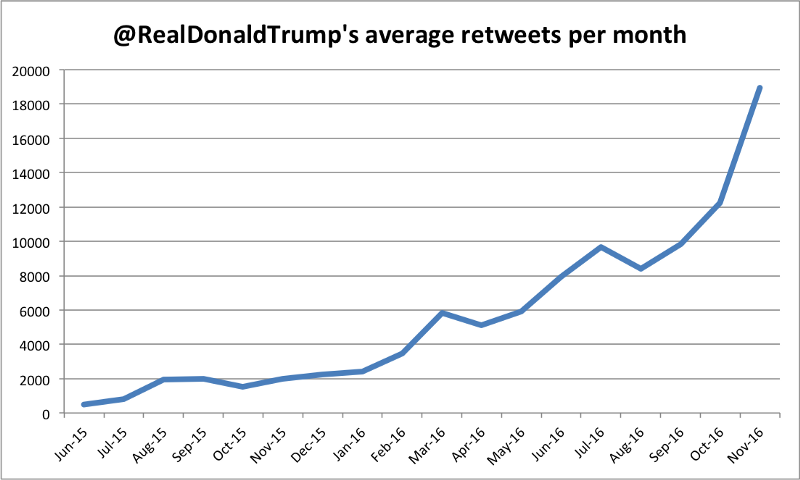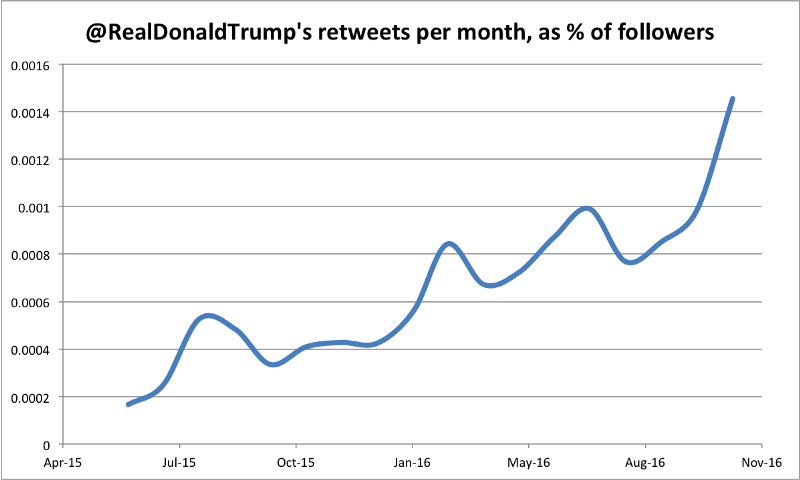Donald Trump, (orange) outrage machine
I’m continuing my analysis of Donald Trump’s instrumental use of Twitter during the campaign, and I’ve turned my attention to the…
I’m continuing my analysis of Donald Trump’s instrumental use of Twitter during the campaign, and I’ve turned my attention to the amplification that his tweets received. Working with the same archive of his tweets, I’ve been averaging the number of retweets that his tweets received for each month of the campaign, as graphed below:
As this graph shows, the amount of amplification Trump was receiving for his tweets rose prodigiously over the course of the campaign, from a paltry average of 200 tweets in the month he announced, to over 3,000 in the month he scored his first primary victories, all the way up to over 12,000 for the final full month of the campaign. (November’s measure should be taken with a pinch of salt, since this only includes tweets sent between November 1 and election day, November 8, when the most attention was being paid to the campaign.)
This engagement is impressive but also intuitive, since Trump gained much more attention both on and offline over the course of the campaign, has the perception of his candidacy was transformed from a complete joke to, well, as less funny joke. To try to control for this effect, I used Trump’s follower count — which also rose dramatically during the campaign — as the denominator for the data above, to create the graph below, which shows Trump’s average retweets per month as a proportion of his followers for that month:
You’ll recognize the basic trajectory of the first graph reflected in the second. But that’s actually more impressive than it seems, because it means that even accounting for his increasing following, Trump received more amplification of his message. Reading from the graph, in June 2015, for example, the average Trump tweet received one retweet for roughly every 5,000 of his followers. By October 2016, the average Trump tweet was receiving a retweet for roughly every 1,000. Put crudely, you were roughly five times more likely to retweet Trump if you followed him in October 2016 than in June 2015, if you followed him.
Why does this matter? It shows that even on a network like Twitter, where the ‘cost’ of following someone is negligible, Trump was constantly attracting more attention even beyond his base of followers, and even as that base of followers grew. To be clear, people retweet for a number of reasons — including, especially Trump’s case, outrage. But whatever the purpose of retweeting, the effect is to amplify their message. En masse, this can give the oxygen of publicity to a candidate and their views. It’s something Trump appears to have taken brutal advantage of during the election.




